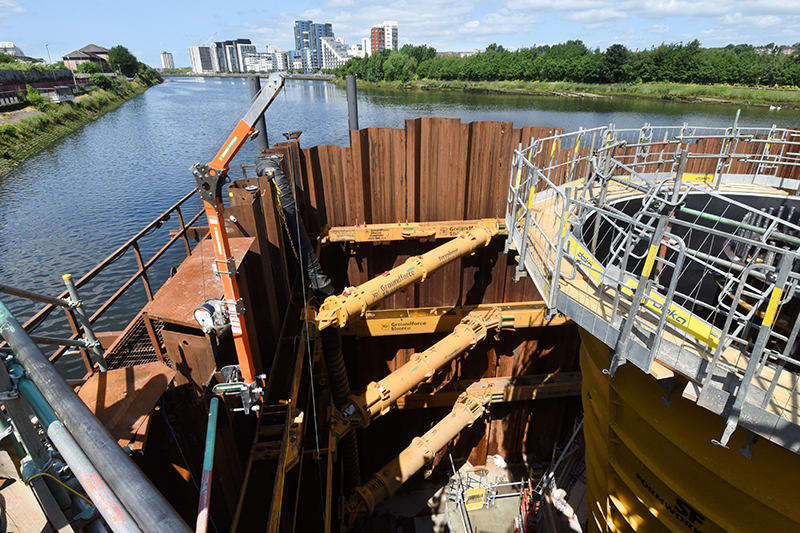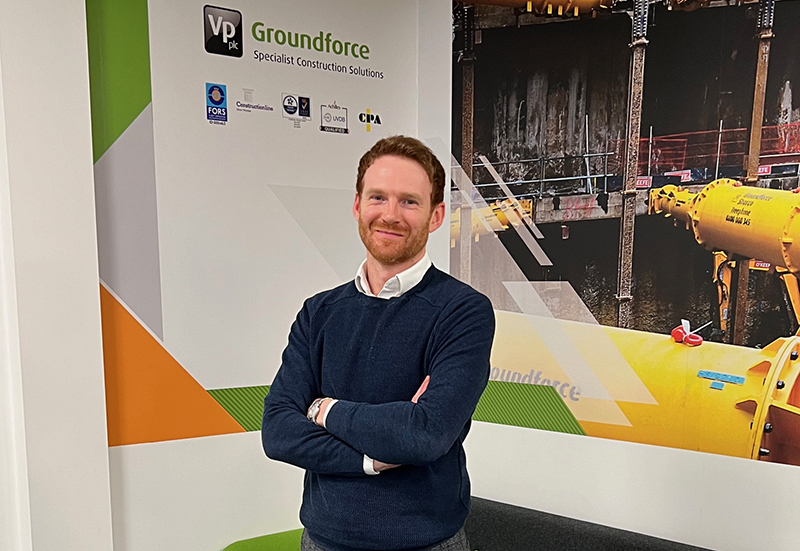
Oliver Smith, engineering director at Groundforce Shorco, answers Project Scotland’s questions about sector trends, new innovations, Scottish projects, and the growing impact AI is having on the ground engineering industry
Q) What does your role entail and how would you describe what technical engineering is?
A) As engineering director at Groundforce Shorco, I lead the engineering function across the UK and Europe, overseeing teams responsible for design, product development, digitisation, and learning. My focus is on ensuring technical excellence, driving innovation, and aligning engineering outputs with broader business objectives. One of the primary focuses at the moment is the digitisation of the business and how we can deliver solutions to our customers that are better quality and turned around faster.
Technical engineering is distinct from project management or site-based engineering in that it involves a deep focus on the design and technical aspects of a project, particularly in providing solutions that are both safe and cost-effective. While project management is concerned with coordinating resources, timelines, and budgets, and site engineering focuses on implementing designs on the ground, technical engineering is about applying advanced principles to develop and optimise engineering solutions that address complex challenges in the design phase.
Q) What trends are you seeing?
A) The ground engineering sector is experiencing significant changes, particularly in the areas of automation, sustainability, and digitisation. There’s a growing push towards more efficient workflows through digital technologies that streamline design and drawing production. This helps reduce human error, increase productivity, and ultimately deliver better outcomes for clients.
Another key trend is a stronger emphasis on sustainability, driven by both regulatory pressures and a growing industry desire to reduce carbon footprints. From the materials we use to the methods we deploy, the focus on more environmentally conscious engineering practices is steadily increasing.
Finally, there’s a continued shift towards embracing collaborative working models across disciplines and businesses. This trend is being supported by cloud-based platforms and data-sharing technologies, making it easier for project teams to work together more efficiently, irrespective of location.

Q) What are some of the latest technologies/innovations impacting the ground engineering industry?
A) In recent years, we’ve seen substantial innovation in technologies that enhance design and improve safety on construction sites. One example is Building Information Modelling (BIM), which has transformed the way we plan and visualise engineering solutions. BIM allows for the integration of design, scheduling, and cost management into a single 3D model, making it easier to spot potential issues early on and minimise costly delays.
Another technology that is making a significant impact is automation in design and drawing production. By using advanced software, we’re able to automate repetitive tasks, streamline workflows, and reduce the time taken to generate designs, which directly improves efficiency and accuracy. We have also seen how the introduction of our YourSolution interactive design tool for temporary works, is helping customers make real cost and time savings.
Furthermore, there’s increased use of drones and 3D scanning technologies for surveying and site analysis. These tools not only improve data accuracy but also enhance safety by reducing the need for workers to access potentially hazardous areas.
Q) Is the sector embracing AI?
A) AI is undoubtedly a game-changer for the ground engineering sector, but we’re still in the early stages of exploring its full potential. There are some promising applications, but widespread adoption is not yet the norm. AI-driven design tools, which can analyse large datasets to optimise designs, have the potential to improve efficiency and safety by creating more cost-effective, robust solutions. However, this technology is still in development and not yet widely integrated across the industry.
Similarly, AI-driven predictive maintenance for fleet management, such as temporary works equipment and machinery, offers the potential to minimise downtime and improve safety by forecasting failures before they occur. This is still being explored in limited use cases.
AI-powered site monitoring, where real-time video or sensor data is analysed to detect safety risks early, shows great promise, but again, it is not yet standard practice on sites.
Given the focus on safety in our sector, it’s crucial that any new technology, particularly AI, is proven to be reliable and effective before full-scale implementation. While AI has the potential to revolutionise our industry, we must ensure that it is fully tested and meets the rigorous safety standards required in the engineering field.
Q) What standout projects have you been involved in?
A) We have supplied equipment and solutions to many large high-profile infrastructure projects in the UK and mainland Europe. Some of our recent ones in Scotland includes the Mannofield Water Treatment Works near Aberdeen for Scottish Water, and the Govan to Partick opening swing bridge for Glasgow City Council, where we assisted main contractor Farrans with the construction of the piers at either end of the crossing by supporting large sheet-piled cofferdams. We are also currently working on the South Clyde Energy project in Glasgow.











